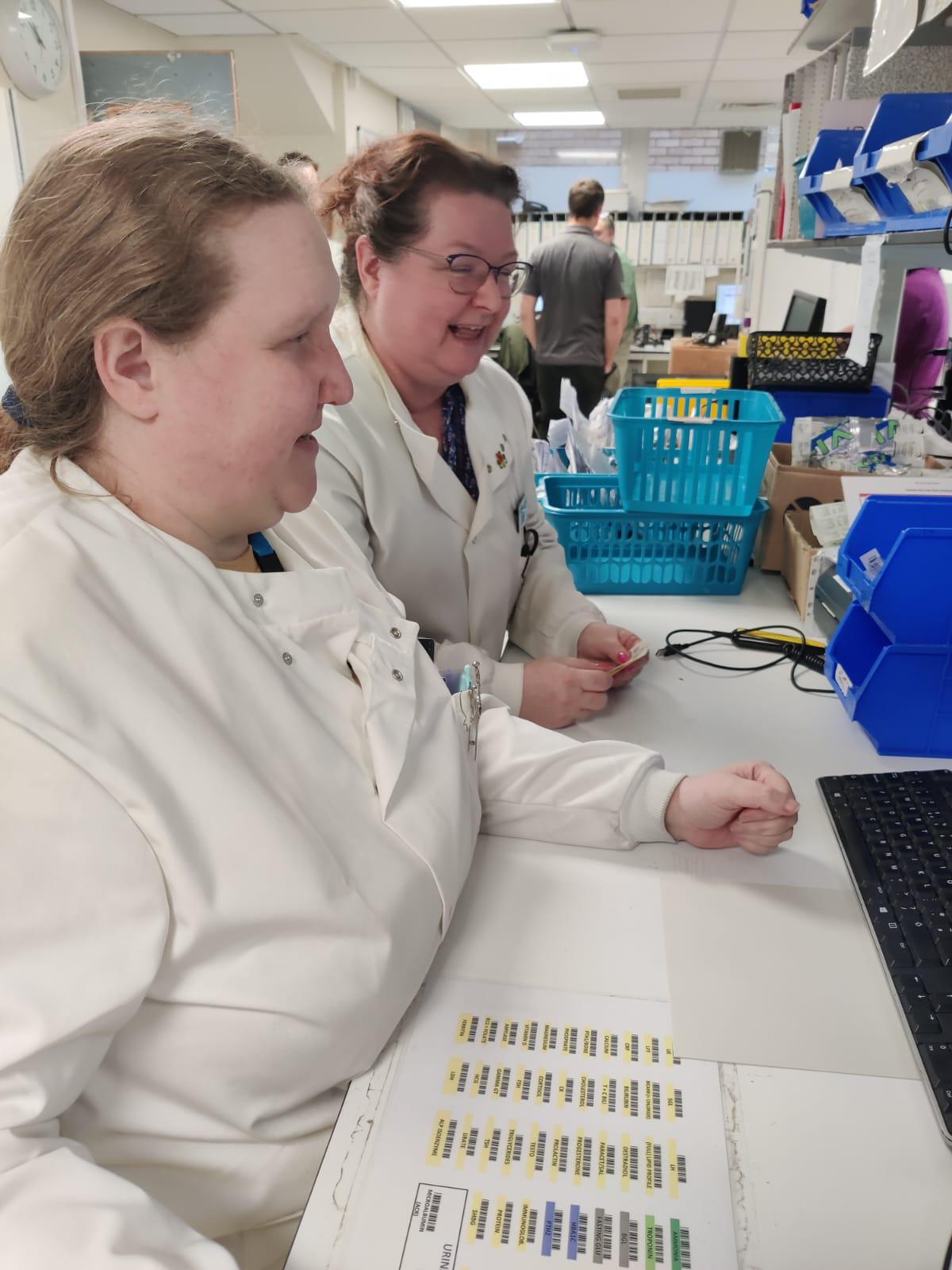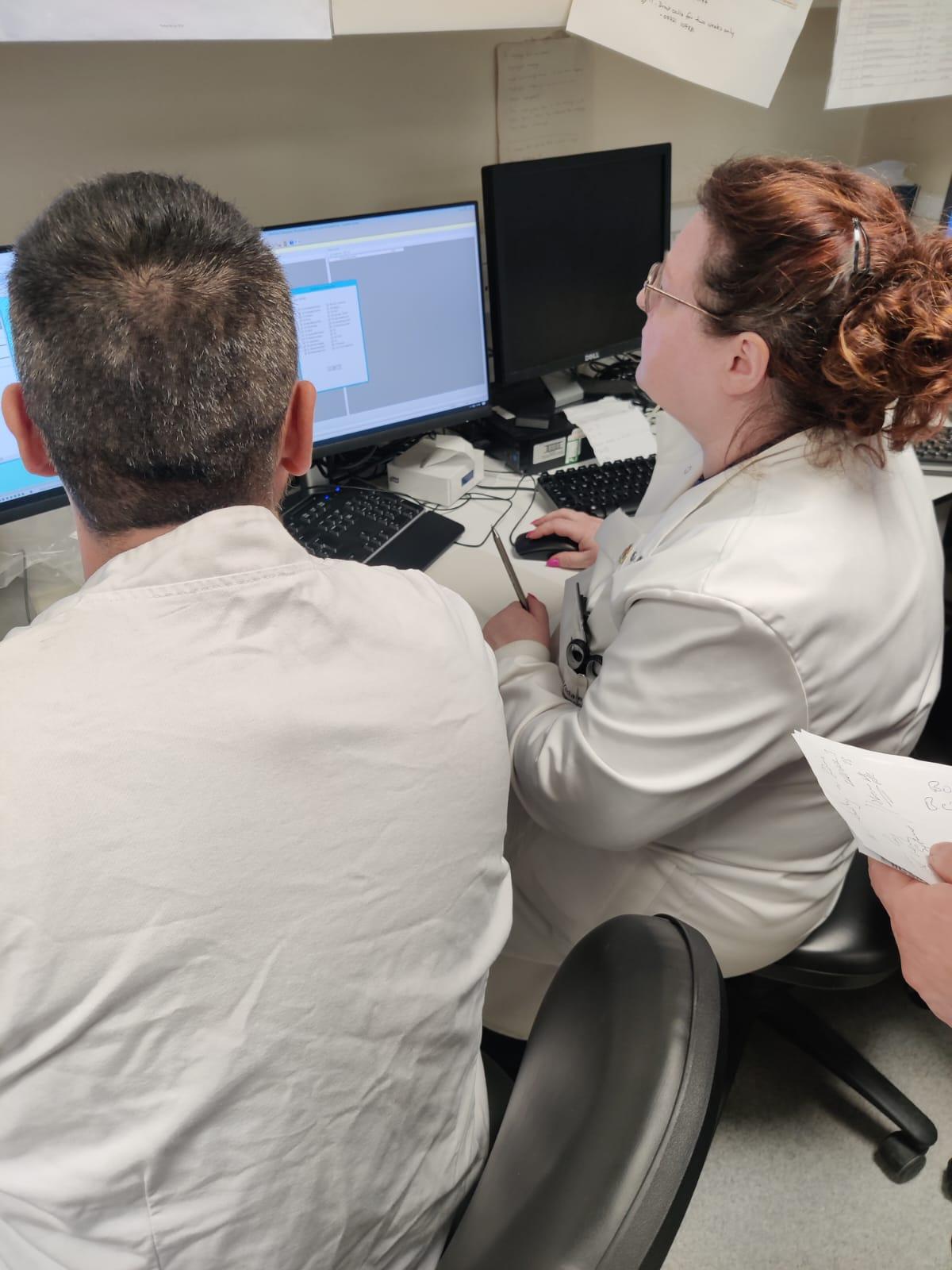Published on: 4 October 2024
Five of our WYAAT trusts can now see pathology and other diagnostic test results from across the region, using ICE OpenNet technology.
Clinicians working across five of our six trusts can now instantly access test results from across our WYAAT pathology network, following the successful roll-out of Clinisys’ ICE OpenNet.
Clinisys ICE OpenNet is an order communications and results reporting system that is used extensively in NHS hospitals and GP practices to enable clinicians to see pathology and other test results obtained at various NHS trusts.
Across WYAAT, ICE OpenNet has been used to link five of our six hospitals request and test result platforms, meaning consultants, nurses, and other clinicians can now view results from across the network: avoiding unnecessary repeat testing, saving print costs and time-consuming calls, and supporting better-informed patient diagnosis and treatment decisions. Airedale NHS Foundation Trust is expected to go-live with this software later in the year.
Janine Bontoft, LIMS implementation manager at WYAAT, said: “The priority for any pathology network is to work as a network and to share information for the benefit of clinicians and patients.
“We have been rolling out a single laboratory information management system (LIMS) from Clinisys, which supports standardised ways of working and information sharing for pathologists. Implementing ICE OpenNet is a cost-effective way to make results available to more clinicians, so they can support patients across the network.”
WYAAT’s non-surgical oncology service (NSO) has embraced ICE OpenNet within their way of working.
Bontoft, said: “NSO clinicians frequently need to share patient data between two separate cancer centres based in Bradford and Leeds. The new system enables the instant sharing of patient information, without the cost and waste of printing and posting, allowing for a smooth transition in patient diagnosis and care across the two centres.”
Other NHS pathology services also already use ICE OpenNet connections to enable clinicians working at one hospital to see tests results from another, or to share information with a local specialist centre. However, WYAAT's roll-out is one of the biggest in the country, connecting six trusts that collectively employ 50,000 staff and order over 50 million tests per year.
ICE OpenNet has also been deployed in a complex IT environment, with trusts having varying electronic patient record systems (EPRs), which needed to be integrated. ICE OpenNet can easily link one instance of ICE to another, even if trusts are using different versions of the system.
Bontoft said: “This is something that all pathology networks would benefit from, not only to share data, but to ensure it is available safely and effectively when clinicians and patients need it.
“We in WYAAT have also been thinking about business continuity. If one of our laboratories needs to transfer work to another, it is much easier to make that happen if these connections are in place, because clinicians can access the results as normal.”
Simon Davies, project manager, Clinisys, said: “Many hospitals and GP surgeries would be unable to function without ICE, and ICE OpenNet means they can see more pathology and other test results in the same, familiar, view.
“That is a huge benefit to health services because, at the moment, results to support referrals from one site to another have to be sent by email or paper and may not be safe or efficient. Or patients may visit a different emergency department, where their tests have to be repeated. With an ICE OpenNet link in place, all their results are available, online, 24/7; wherever they were ordered or conducted.”
With the roll-out across our WYAAT trusts almost complete, the WYAAT pathology network is looking at how it can share results with neighbouring primary and community organisations and with the local shared care record, which includes data from a wider range of trust, GP, and local authority systems.
Davies said: “This is another benefit of ICE OpenNet. Every trust in the NHS has links with organisations outside its region, and they can use ICE OpenNet to communicate with their ICEs. It’s a simple and effective way to achieve the NHS’ ambition to get data to flow around the system.”












